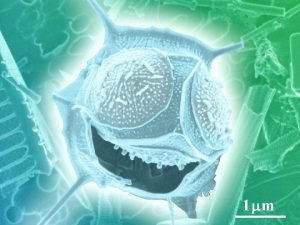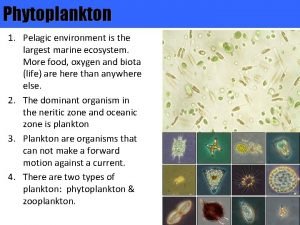Hidden production On the importance of pelagic phytoplankton

- Slides: 1

Hidden production: On the importance of pelagic phytoplankton blooms beneath Arctic sea ice Research Objective We quantify the pelagic primary production beneath Arctic sea ice, which is not available from observations. Mean primary production (mg C / m 2 / d) during June averaged over 19802018. White contour lines represent bathymetry (50, 500, and 2, 000 m); green, blue and magenta contour lines represent ice concentration (15, 50, and 85%, respectively). • • • Impact • Mean annual cycle of primary production (Gg C / d) in the Central Arctic region. The black line represents the total; the blue line represents production in waters covered by 50% ice; the red line represents production in waters with <50% ice. The shaded blue area represents the interannual variability in production in waters covered by 50% ice. Literature is reviewed on the limited observations of under-sea ice phytoplankton blooms. Under-sea ice phytoplankton production is not available from satellite observations. According to model results, most primary production in the Arctic Ocean occurs under sea ice that is at least 50% in concentration. Annual cycles of primary production show there is a peak in June and time series over the last 4 decades show an increasing trend. • Current observational estimates of the primary production in the Arctic Ocean may be significantly underestimated, due to the importance of under-sea ice production. Increased light transmission, due to the removal of sea ice, more extensive melt ponds, and thinner sea ice, is implicated as the main cause of increasing trends in primary production. Clement Kinney et al. 2020: Hidden production: On the importance of pelagic phytoplankton blooms beneath Arctic sea ice. Journal of Geophysical Research - Oceans, 125, 9, https: //doi. org/10. 1029/2020 JC 016211 1 BER Climate Research Department of Energy • Office of Science • Biological and Environmental Research

